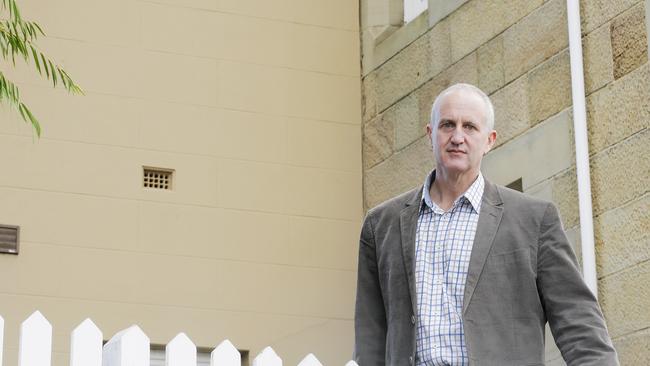Cracks starting to show in Hobart homes after damaging floods
FLOOD-damaged homes around Hobart are continuing to feel the strain — with some even cracking under the pressure.
Tasmania
Don't miss out on the headlines from Tasmania. Followed categories will be added to My News.
CRACKS are appearing in some flood-damaged homes around Southern Tasmania as moisture-laden earth continues to put a strain on building structures.
Changed soil conditions following May’s flash flooding have placed pressure on building foundations, engineers say.
Insurance companies confirmed they are receiving reports of private homes showing signs of cracking, and even Hobart’s City Hall’s hefty walls have suffered.
Chartered structural and civil engineer Dave Fisher said further cracking may occur as moisture levels in soils continued to change in the coming months.
“It depends on how saturated the soils beneath the building have become,” Mr Fisher said.
“You might see anything from small hairline cracks up to very large cracks that you can get your finger in.”
He said the clay soils around many parts of Hobart tended to expand as they absorbed water, and the expansion could happen slowly.
He said the swelling process generally occurred first on the uphill side of a building where water entered and could result in cracking in the building — particularly at the weak points.
Floors could also start to feel “bouncy”, as the foundations might move slightly from the flooring,
Mr Fisher said often the problem remedied itself once soils dried out over summer, and sometimes homeowners could act too quickly to fix the problem.
He said that, in most instances, the cracking was unlikely to be dangerous — although people should contact a chartered professional engineer if they were concerned.
UNI LOOKS TO NEXT CHAPTER AFTER $15M BLOW

To avoid damage, Mr Fisher advised homeowners to try to divert water away from under the house. He advised people to inspect sewerage, stormwater and roofwater to ensure moisture is not getting under buildings.
RACT Insurance CEO Trent Sayers said the company had received reports of cracks in some private homes following the catastrophic storm, though it was not common.
“When a lot of water flows through in a short period of time it can wash away soil around slabs and foundations, leading to cracking,” Mr Sayers said.
“There are some isolated incidents where this has occurred,” he said.
As well as private homes, cracks have also appeared in the blockwork walls of Hobart’s City Hall.
A council spokesman said the recent flooding had caused some movement under the building.
“An engineering assessment of the Hobart City Hall has established that some subsidence on one side of the building has occurred in the past,” he said.
“The recent flooding of the rivulet through this part of the city seems to have caused further subsidence movement within part of the building structure.”
The council said there was no issue with the venue being used now and into the future.


